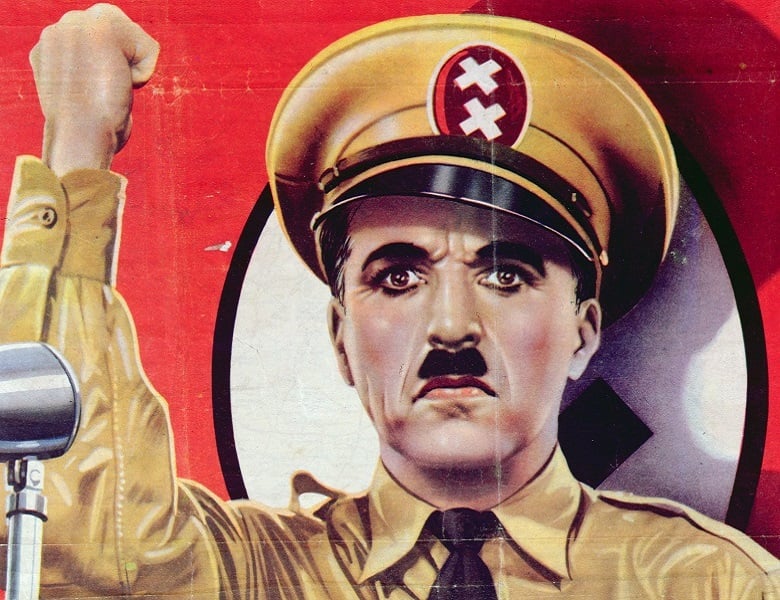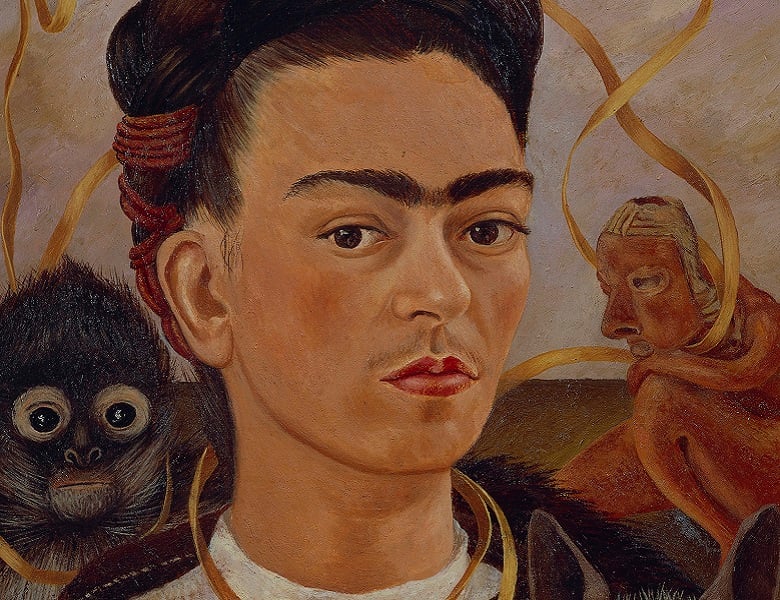
Remember, Remember, it’s Time for Movember
From The Laughing Cavalier to Charlie Chaplin, we prepare for Movember by taking a look at the growth of the dot’n’dash* through history.
To moustache is to be a man. Whilst the growth of facial hair signifies the transformation of pre-pubescent male into adulthood, a moustache is an affectation which requires maintenance and grooming tools. Full facial hair is inevitable for most adult men without resort to a razor for a week, but a moustache must be created. As James Uden of e-zine themurdockman writes, ‘Moustaches have been theoretically possible since flint razors were first fashioned around 30,000 B.C., although it’s unknown whether or not Stone Age man sported the first ever example of upper-lip topiary.’
Iron Age Man’s Mo
We don’t have any pictorial evidence of Iron Age man’s mo, but we do have his shaving kit. See more shaving kits from history.

Two razors, from Hallstatt cemetery (bronze), Iron Age / Musee des Antiquites Nationales, France / Giraudon
Origins of the Moustache
The etymology of the word ‘moustache’ is complex. It comes from the 16th century French moustache, ultimately originating as a diminutive of Hellenistic Greek μύσταξ (mustax, mustak-), meaning “upper lip” or “facial hair”. This probably came from the Hellenistic Greek word μύλλον (mullon), “lip.”
Socrates
If facial hair signifies adulthood, adulthood signifies experience, and knowledge. The full facial sported by Socrates clearly indicates that such luxuriant growth is the privilege of the wise. The moustache here appears styled, a creation apart from the surrounding beard.
Confucius
Confucius’ elegant, symmetrical grooming perhaps illustrates his belief that…
“A man without a moustache is a man without a soul”- Confucius
The Tudor Tache
There’s a great deal of historical precedent, then, for advanced male grooming in many cultures and countries. Moving the focus onto Europe, in Tudor England Henry VIII favoured a slim moustache, unlike his clean-shaven father Henry VII, and royal lip plumage came into vogue for 100 years. Shakespeare was merely apeing the trend with his recognisable neatly-styled ‘tache.
Charles I moved to Confucian levels with his grooming, but such personal vanity clashed with Cromwell’s Puritanical ideals with fatal consequences. Skipping on, the moustache goes underground for almost 100 years – Georgian dandies preferred the smooth-shaven look. With a more military, traditionally masculine style coming into fashion under Victoria, mouth brows return with Prince Albert leading the charge.

Portrait of King Charles I (1600-49) by Sir Anthony van Dyck, (1599-1641) / Photo © Philip Mould Ltd, London
Famous facial hair
When worn by public figures and members of royalty, the presence of the moustache became political – Charlie Chaplin‘s reign in Hollywood gave him licence to mock the owner of a very sinister smudge-like ‘stache…

Poster advertising Charlie Chaplin’s ‘The Great Dictator’, c.1945 (colour litho), Belgian School / Archives Charmet
The post-modern moustache
And in the modern and post-modern art worlds, Dali and Frida Kahlo salute the creative dynamism of self-expression via facial hair. Remember girls, moustaches aren’t just for men.
*Cockney rhyming slang for moustache

Portrait of Salvador Dali (1904-89) (b/w photo), French Photographer, (20th century) / Roger-Viollet, Paris
And if you still haven’t yet had your fill of facial hair – see our ‘Montache’ for movember, featuring some of Bridgeman’s hairiest images and footage clips.
Contact our sales team on uksales@bridgemanimages.com for more information regarding licensing, reproduction and copyright.



